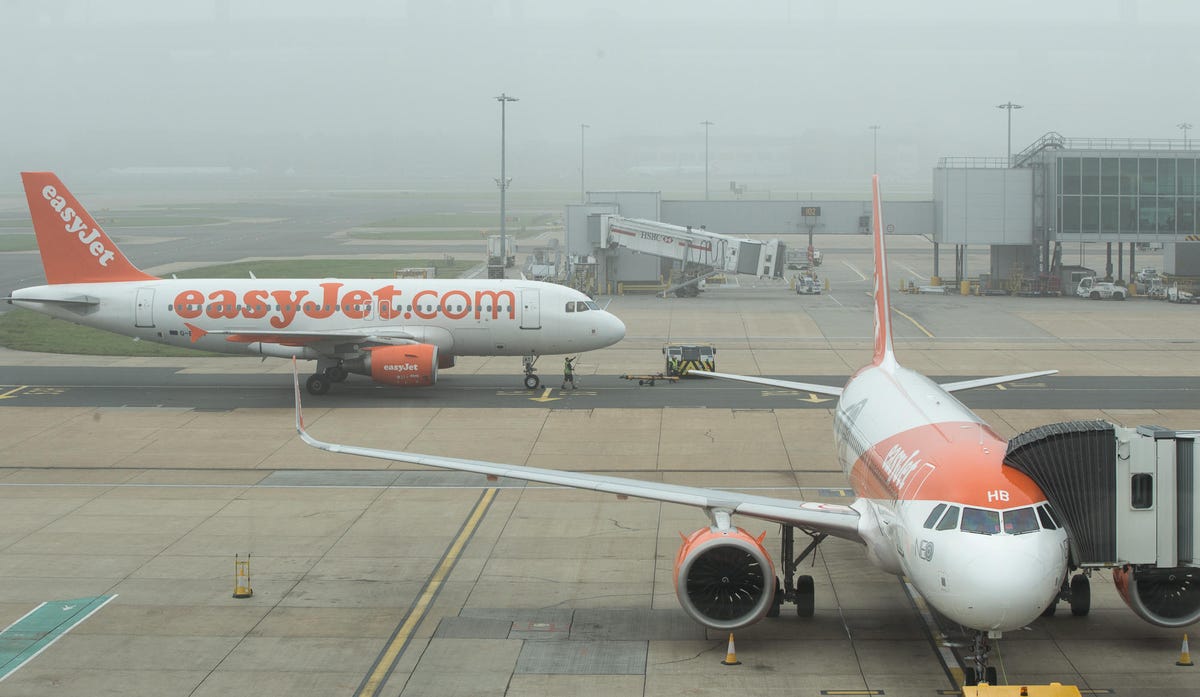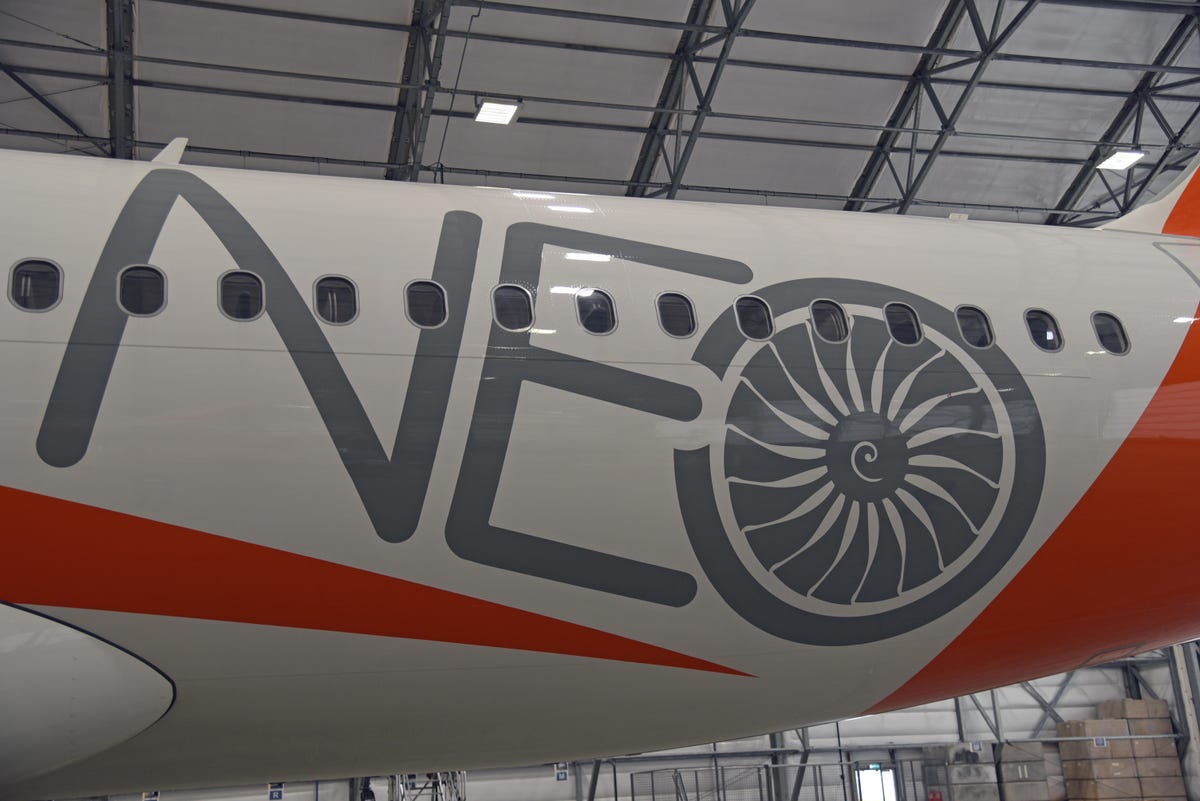EasyJet shows how it wants to change air travel
Go inside EasyJet's maintenance hangar at London's Gatwick to see how the airline hopes to make air travel cleaner, quieter and more efficient.

It was a foggy morning when we arrived at London's Gatwick Airport for EasyJet's Innovation Day. The Airbus A320neo that would take us for a ride across the airport to the airline's hangar was parked at a gate. Behind it, other EasyJet aircraft that were actually flying somewhere pushed back from the terminal before taxiing to the runway.
It felt wholly odd to be issued a boarding pass and go through security as if we were catching a flight for a weekend break. And it's not everyday that you see the airport where you're currently waiting as your flight's destination.
Captain Lynne Clarke welcomed us onboard. Again, it felt just like a regular flight. People jockeyed for overhead bin space and we even had an abridged safety briefing (like on a regular flight, few people were paying attention).
As we taxied over to the hangar we passed under a footbridge that connects Gatwick's North Terminal with a satellite concourse. It's the world's highest and longest bridge over an active taxiway. Only an Airbus A380 is too big to pass under it.
It took just 15 minutes for a diesel-powered tug to tow us across the airport. You can spend more time than that waiting to take off at Heathrow.
After we parked in the hangar, we exited via mobile stairs by the usual front door. Completely normal, right?
EasyJet started the event by showing how it's using drones to inspect an aircraft's skin for scars or popped rivets after a lightning strike. Paul Moore, the airline's chief of communications, says that on average three EasyJet airplanes are struck by lightning each week. After a strike, crews need to carefully check for damage and make repairs before the airliner can fly again.
Drones cut the time needed to inspect an airplane from eight hours to just 12 minutes. That reduces maintenance costs and gets the jets back into the airfare faster where they earn money flying paying passengers. Also, because maintenance crews aren't constantly moving ladders and platforms around the airplane, there's less risk of accidental damage to the airplane's hull.
The drones use high-definition cameras to inspect the airplane. Technicians then watch the footage in a control room to check for any damage.
Though EasyJet is already using drones flying under the control of a pilot, the airline is transitioning to automated drones for the same inspection jobs. The drones fly around EasyJet's Airbus A319s and A320s on preprogrammed courses.
For our demonstration, though, a pilot carefully flew the drone around the hangar.
EasyJet also announced a partnership with a US company to develop an all-electric passenger airplane over the next decade. The airliner will be able to fly on 20 percent of EasyJet's shortrange routes across Europe, both reducing carbon emissions and lowering noise levels for communities near airports.
California-based Wright Electric says it will design and build an airliner with electric motors in the wings that will draw power from batteries. Wright declined to go into detail about exactly how the engines would work.
The Airbus A320neo first flew in 2014 and started carrying passengers for Lufthansa two years later. Its main improvement over existing A320s are cleaner engines that cut emissions by 15 percent and reduce noise by 50 percent (neo is an acronym for New Engine Option). This is EasyJet's second A320neo. It was delivered last June.
The A320neo uses two CFM LEAP-1A engines.
Panels open the engine gave us a peek inside.
Just be careful of your fingers.

In case you missed it earlier, EasyJet lets you know that this is an A320neo.
You can walk under an A320neo, but you'll have to duck if you're tall.
When it's not flying, remember to plug in your airplane if you want any power in the cabin.
The round port at the back of the aircraft is the auxiliary power unit, which provides power to start the main engines.
The drone hovers near one of the A320neo's sharklets. Mounted to the end of each wing, they help improve the wing's efficiency.
LCD screens in the cockpit deliver essential flight information like the altitude, airspeed and heading. Gauges cover the rest of the cockpit, but it's a less crowded space than you might expect. In front of each seat are the rudder pedals and the brakes for stopping the A320 after landing, while between the seats are the throttles that control engine power.
Airbus aircraft uses a side control stick instead of control column in front of the pilot's seat to fly the airplane. A tablet just above the side stick shows a map of Gatwick.
The A320neo seats 186 passengers. This being EasyJet, it's all economy class.
Try to snag the exit row for a bit more legroom. The thin seats are comfortable enough for a short flight.
EasyJet now uses two electric tugs at Gatwick to push back aircraft from the gates.

